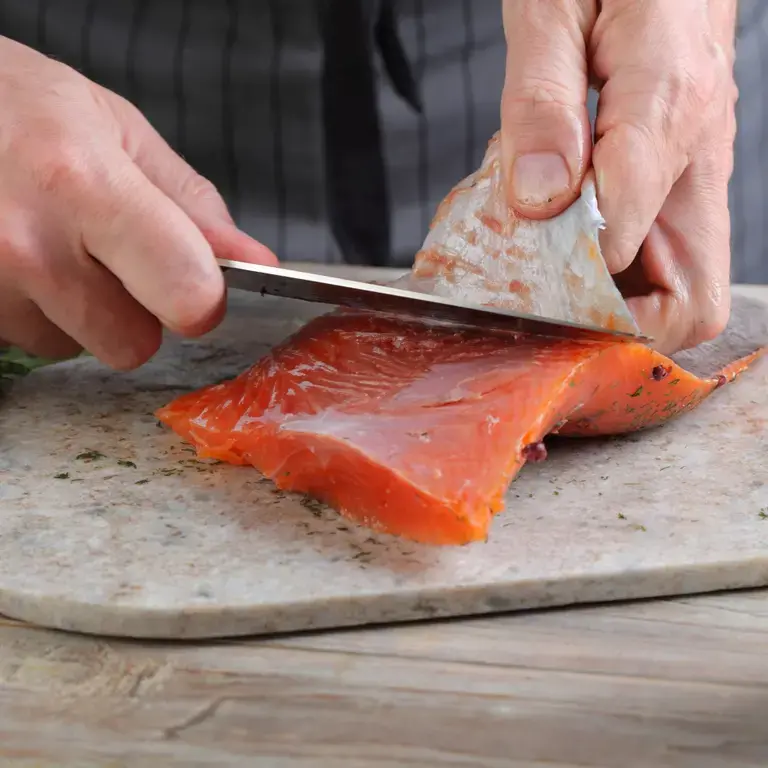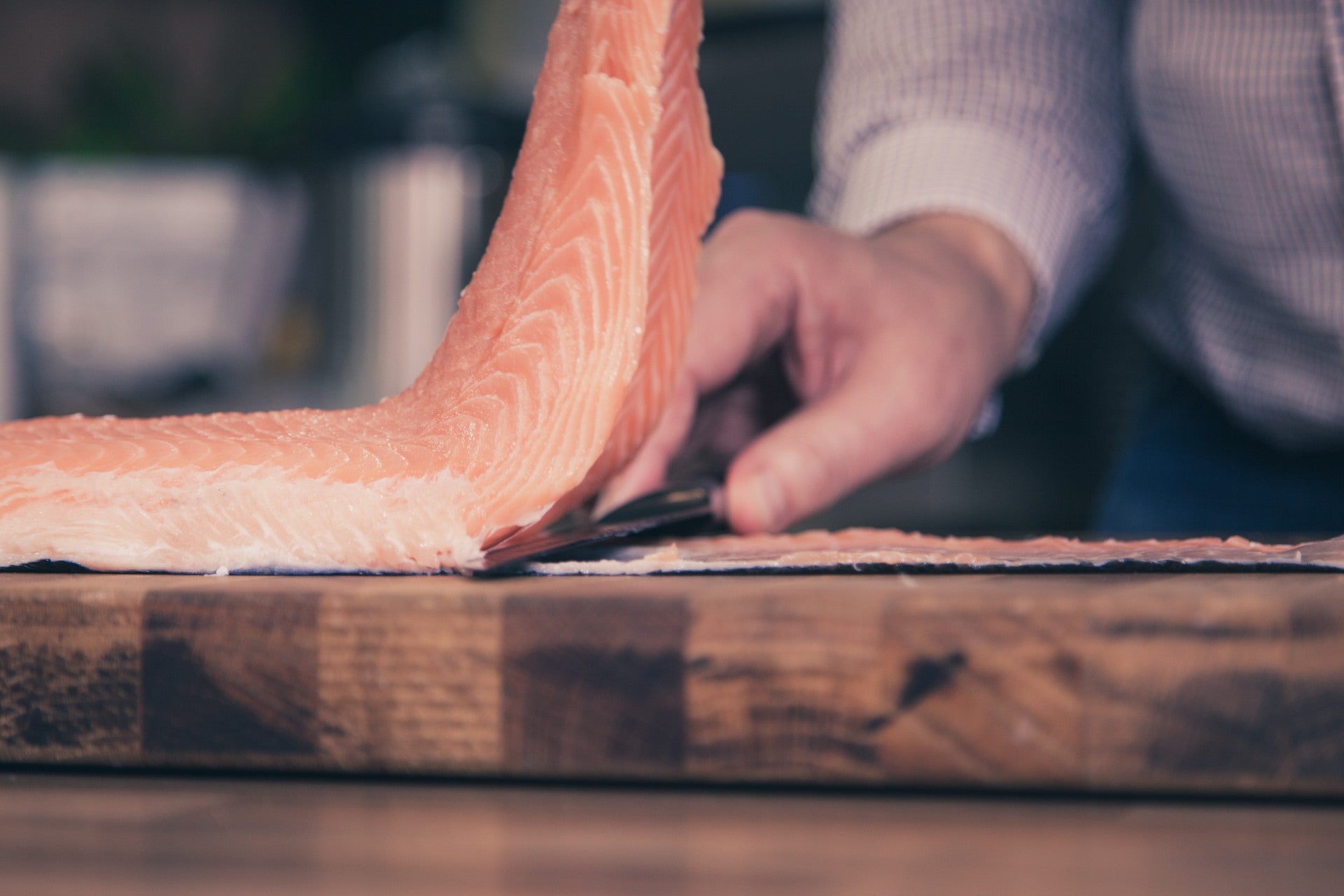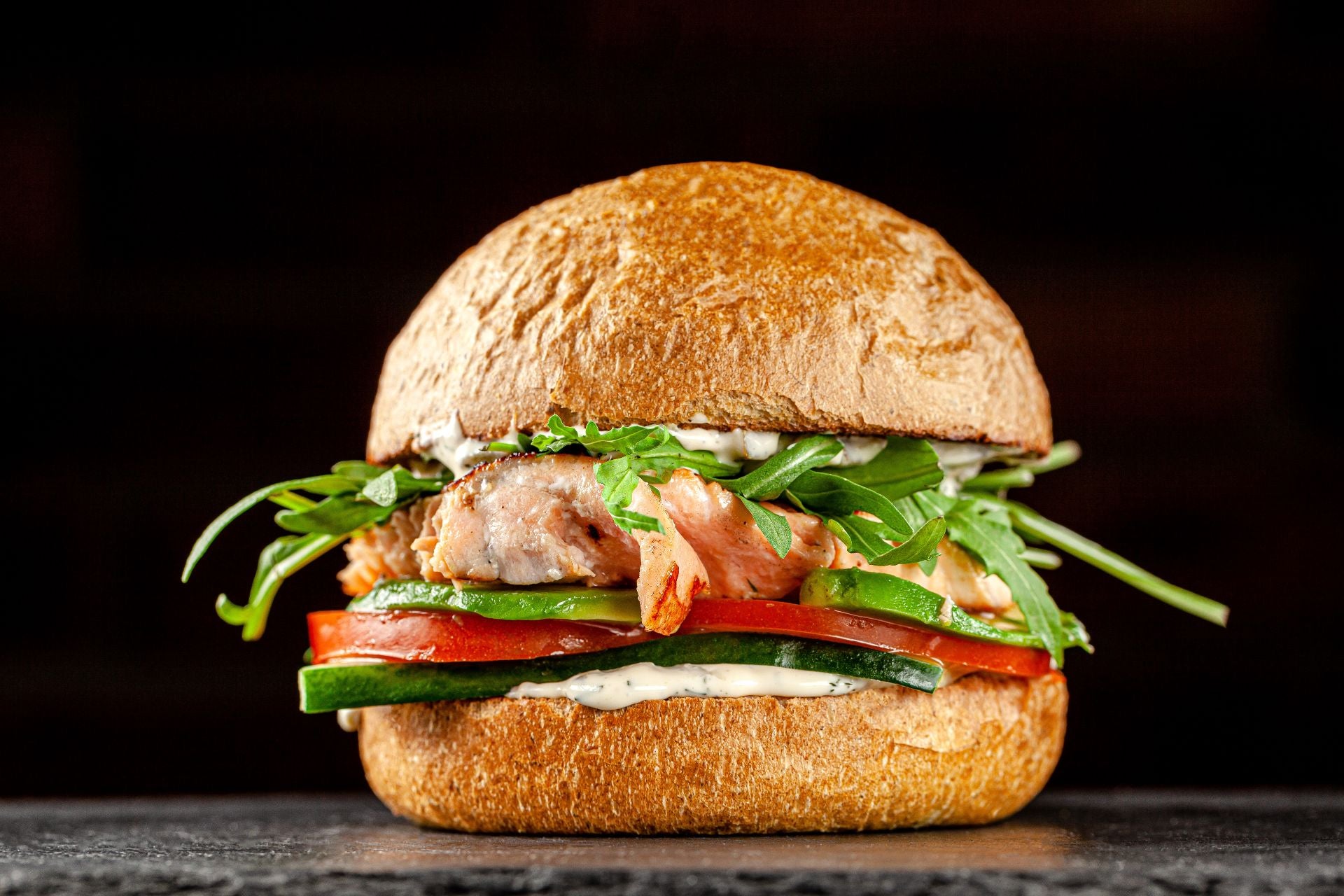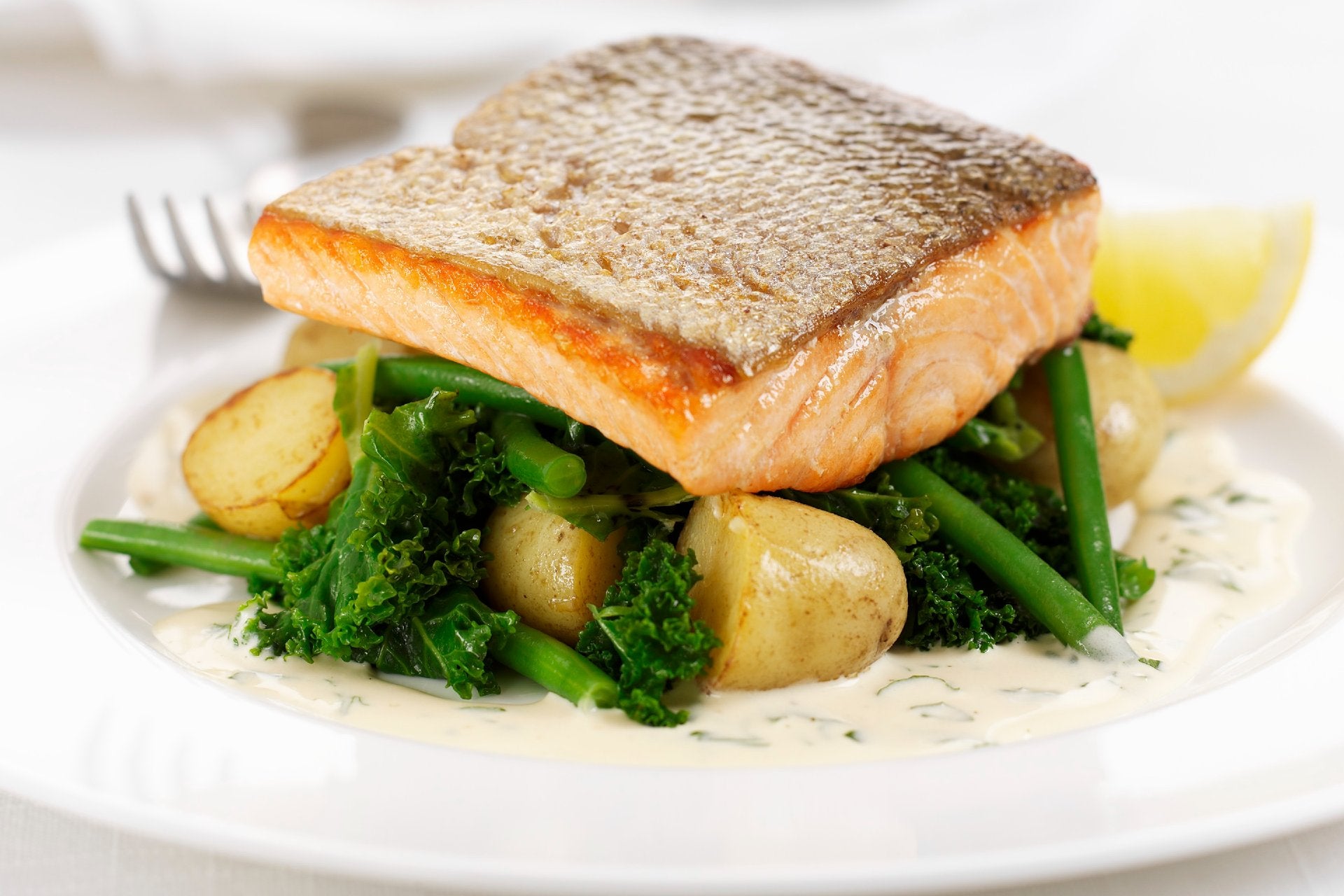- Place the fish skin-side down on a cutting board, close to the edge of the counter, and with the tail (or a corner, if you’ve already cut the fish into fillets) closest to the edge.
- Take a long, thin knife with a sharp edge, and slide it between the skin and the meat, starting at the tail end (or corner) by the edge of the counter.
- Once you’ve separated about an inch of skin, grip the skin firmly between your finger and thumb, using a paper towel to stop your fingers from slipping. Keep your hand over the end of the counter to avoid scraping your knuckles.
- Pull gently but firmly on the freed skin, and move the knife in the opposite direction. If the skin is a little stubborn, you can make a slight sawing motion with the knife.
- Turn the fillet over and check that all the skin is removed. If there are any scraps still remaining, trim them off.
How to remove pin bones
Run your fingertips back and forth over the salmon flesh to feel for the bones, which can usually be found towards the middle of the fillet. Pluck them out with tweezers or pliers.
The best knife for filleting salmon
It goes without saying that you need a sharp knife and it is sensible to use one with a blade longer than the width of the salmon. You may prefer a more flexible boning knife, but a thicker chef’s knife is more rigid and will be quicker due to its wider blade.
How to store a salmon fillet
Salmon fillets can be stored in the refrigerator for up to two days. Make sure the whole fillets are tightly wrapped well in plastic and foil. Salmon can be frozen for up to a month if carefully wrapped, but needs to be thoroughly defrosted before use.
Recipes with salmon (with and without the skin)
Without the skin:
Now you know how to remove the skin, making your favourite salmon dishes couldn’t be easier. Try out your new knife skills on these succulent skinless salmon recipes.












